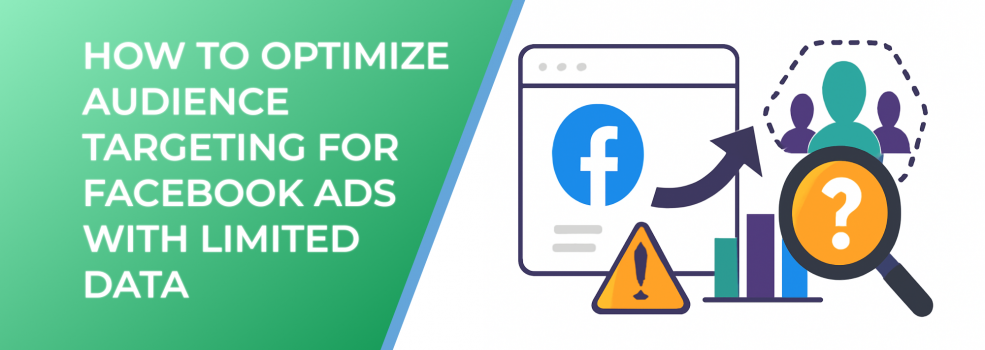When it comes to Facebook advertising, targeting the right audience is crucial to the success of your campaigns. However, many advertisers face the challenge of having limited data to guide their targeting decisions. Whether you're a small business just starting out or working with a new product, optimizing your audience targeting is essential to ensure your ads are reaching the right people. In this article, we'll explore how to optimize Facebook ad targeting even with limited data.
1. Start with Broad Targeting and Use Facebook’s Machine Learning
If you're limited by data, Facebook's machine learning tools are your best ally. By selecting broader audience categories, you allow Facebook's algorithm to learn more about the people who engage with your ads. The platform can then use that data to refine the audience over time.
According to Statista, Facebook has over 2.9 billion monthly active users, giving its machine learning algorithms a vast pool of data to work from. Even with limited initial data, the algorithm can quickly learn which types of users are most likely to engage with your ad, improving your targeting over time.
2. Use Lookalike Audiences
If you’ve run ads before, even with minimal results, you can create Lookalike Audiences based on that data. Lookalike Audiences allow you to target new people who resemble your existing customers. This helps you expand your reach while maintaining relevance.
According to Facebook, Lookalike Audiences can increase the likelihood of conversion by targeting people who share similar behaviors, interests, and demographics with your best customers. This feature can be incredibly powerful, especially when data is limited.
3. Focus on Interest and Behavior-Based Targeting
Interest-based and behavior-based targeting are effective ways to target people with relevant ads. Even if you don’t have extensive customer data, Facebook provides robust options to narrow down your audience by their activities and interests. For example, if you're selling a fitness product, you can target people interested in health and wellness or those who engage with fitness-related content.
Additionally, behavior-based targeting allows you to reach people based on their activities on Facebook, like their interactions with similar products or pages.
4. Test and Refine
One of the best ways to optimize your targeting with limited data is through continuous testing. Run A/B tests on different audience segments and ad creatives to see what works best. Monitor the results and use Facebook's Analytics tools to refine your audience targeting over time. Even a small amount of data can lead to insights that help you fine-tune your targeting.
A 2020 study from AdEspresso found that A/B testing ad creatives can increase the return on ad spend (ROAS) by as much as 20-30%.
5. Use Demographic Targeting
Another helpful strategy when data is limited is to use Facebook’s demographic targeting options. You can choose to target people based on their age, gender, education, occupation, or even life events like marriage or the birth of a child. This allows you to reach a more specific audience based on common life stages or attributes.
6. Set Clear Objectives for Your Ads
When working with limited data, it's important to set clear, measurable objectives for your ad campaigns. Whether you're aiming for brand awareness, lead generation, or website conversions, defining your goal helps Facebook's algorithm optimize your campaign towards achieving that outcome. A focused goal makes your limited data more actionable.
Key Takeaways:
-
Facebook’s machine learning can help optimize your audience targeting, even with minimal data.
-
Use Lookalike Audiences to target people who resemble your existing customer base.
-
Leverage interest and behavior-based targeting to reach the right audience.
-
Continuously test and refine your targeting strategy for better results.
-
Demographic targeting can be a powerful tool when working with limited data.
-
Set clear objectives to help guide Facebook’s algorithm in optimizing your campaigns.
If you'd like to dive deeper into Facebook ad strategies, be sure to check out our articles like Factors That Influence the Cost of Facebook Ads or Facebook Ad Mistakes – All You Should Know About.
By employing these strategies and refining your approach over time, you can improve your ad targeting and achieve better results, even with limited data.

